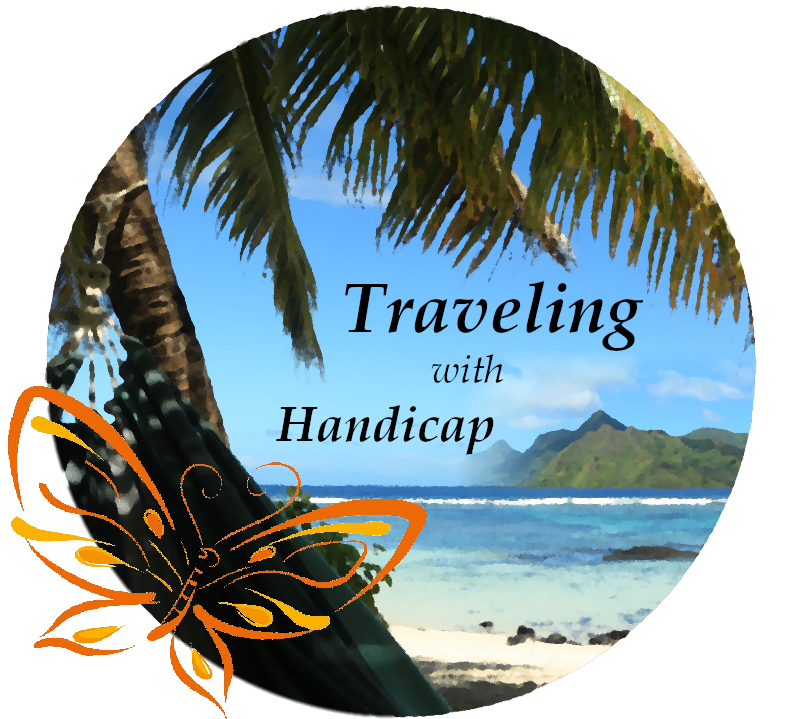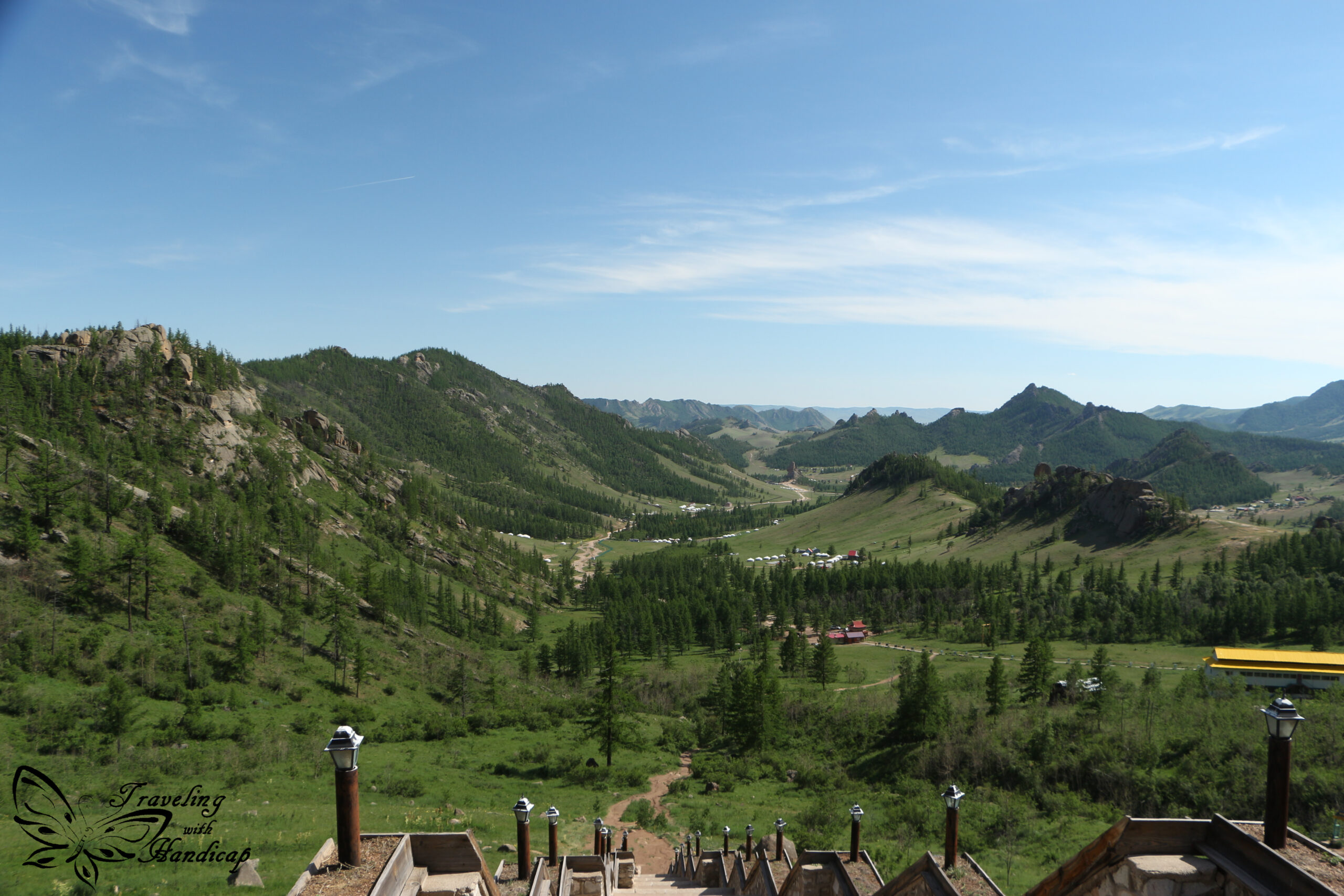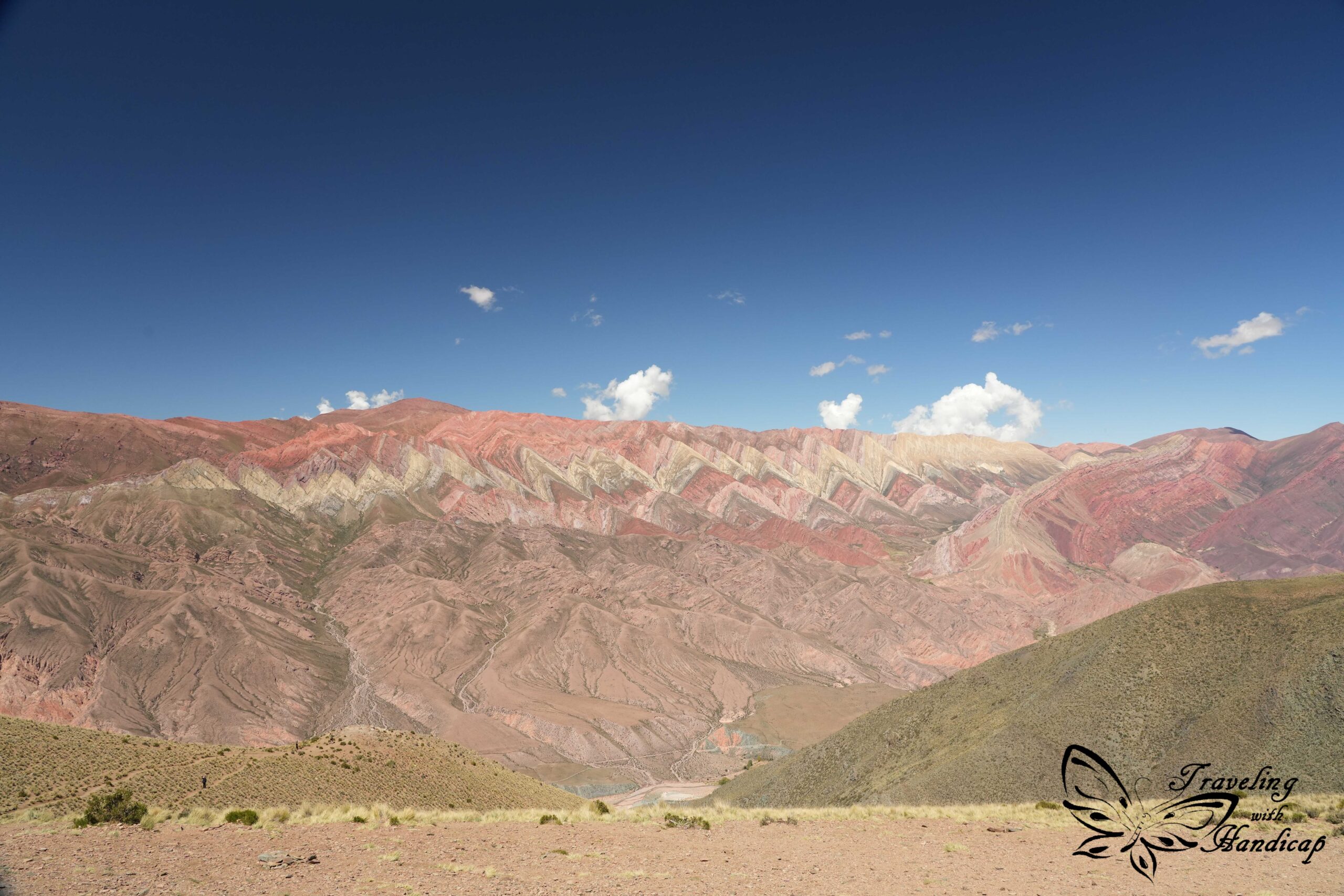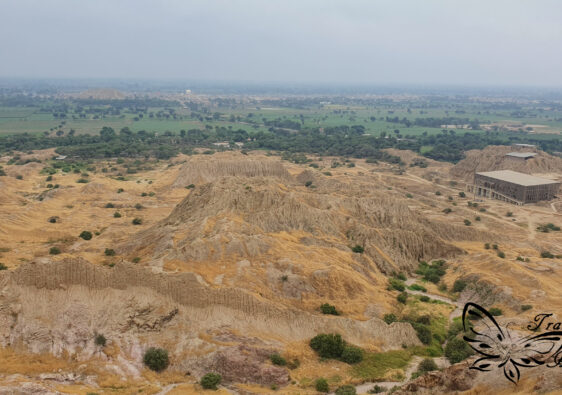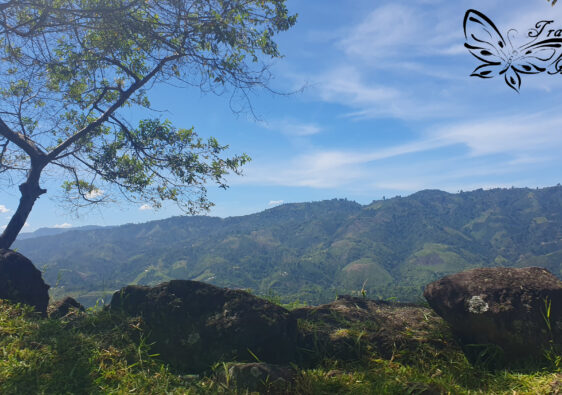The only journey is the one within.
Rainer Maria Rilke
Rio is more difficult to be visited than São Paulo. This is because São Paulo covers a huge rather flat area while Rio is built along the coastline and around mountains. Many mountains are also partly covered with the famous favelas. The most well-known parts are the historic center, the Cristo Redentor statue, the Sugar Loaf, as well as the beaches Ipanema and Copacabana. This is why I dedicate specific sections to those parts. Nevertheless, there are many more things to check out or do in Rio. Those are listed below the “further things” further down the page.
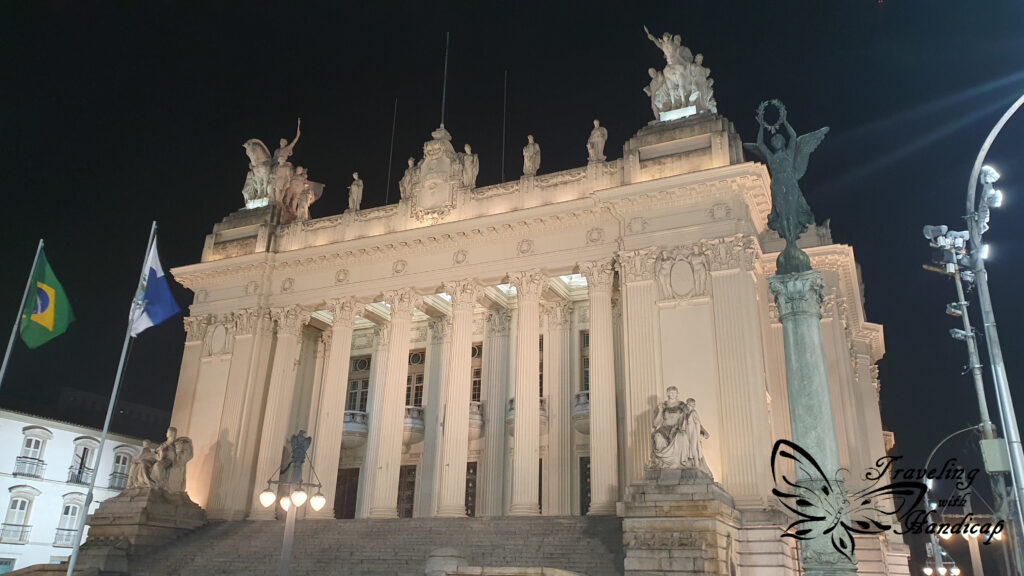
I have to admit that I prefer São Paulo over Rio as it felt more like a city and more organized. Nevertheless, I was not aware that after visiting Rio, São Paulo and Buenos Aires, my favorite among the three cities is Buenos Aires. However, it has to be mentioned that visiting Buenos Aires is much more difficult than Rio or São Paulo if you have accessibility issues.

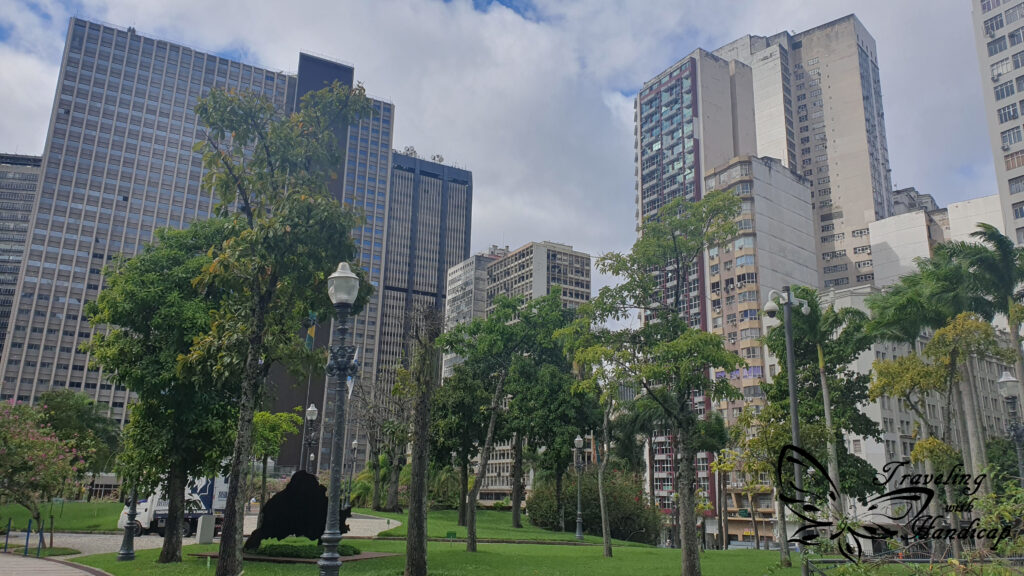
The historic center
Walking around in the historic center is possible without a guide. However, there are streets you shouldn’t walk along. No guidebook can be 100% up to date which streets are considered safe. Therefore, I recommend participating in a free walking tour and coming back to places afterward, as soon as you know which roads to take or avoid. A general rule of thumb is to only walk along roads with an abundance of people. However, you need to watch the people. If the people are wearing jewelry visibly, then it’s a safe way to walk. On other roads, there might be many people but poor people which try to steal every visible thing of value.

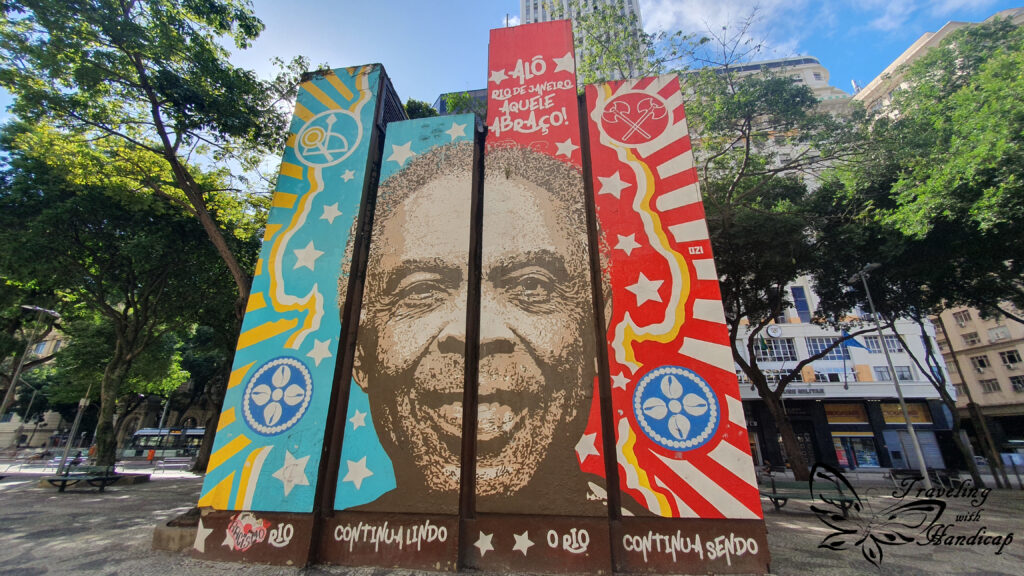

Escadaria Selarón
I start with the only touristy part of the historic center which I knew beyond the Sugar Loaf and Cristo, before reading about what to do. The Escadaria Selarón are very famous stairs, shaped and arranged by the Chilean artist Jorge Selarón. At the beginning, when Jorge started, the stairs were not known to anyone. As soon as they became something special, people from all over the world started sending tiles to Jorge to get them included into the artwork. I found the tile of Straubing at the very beginning of the stairs.



The color red is used as homage to Chile, the other colors representing Brazil. The stairs contain many tiles of different places as well as specific tiles showing a black pregnant woman. These tiles are from Jorge Selarón, but it is not 100% clear what the woman stands for. There is usually a queue for taking photos further down the stairs. Further up, people sell drinks (you get Caipirinha everywhere 😉 ) or snacks. On the upper end, people meet to playing the guitar or sing.
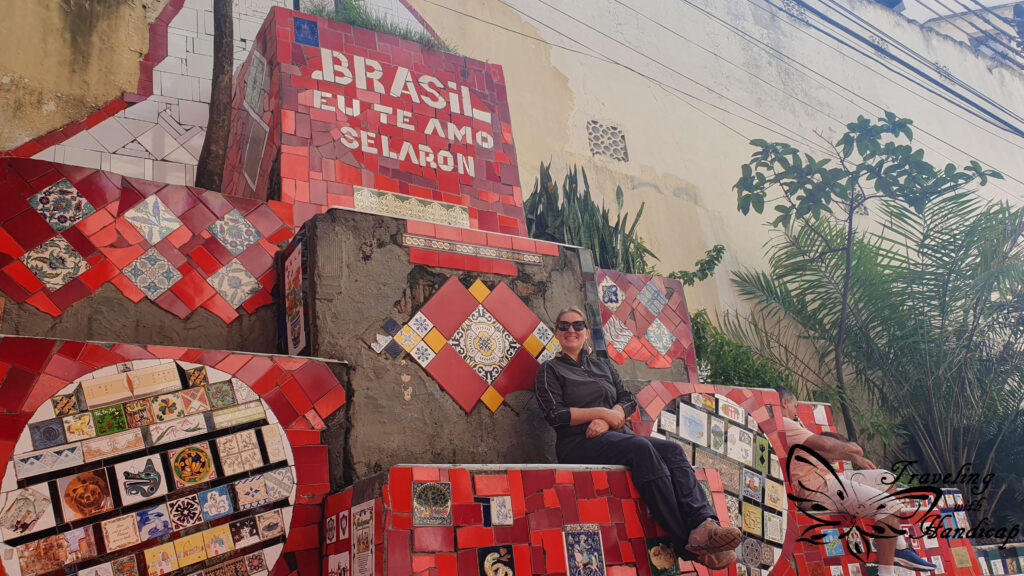
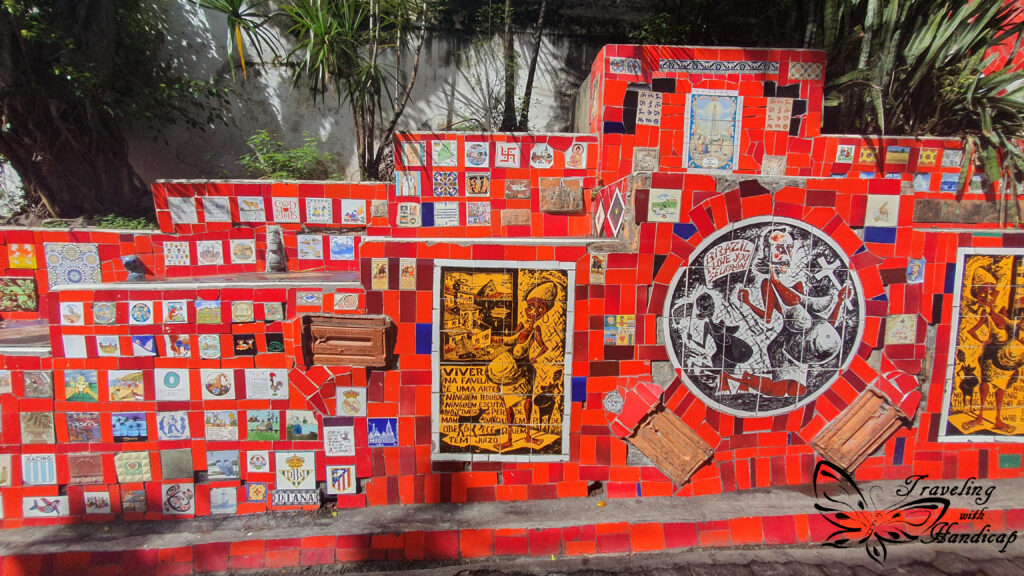
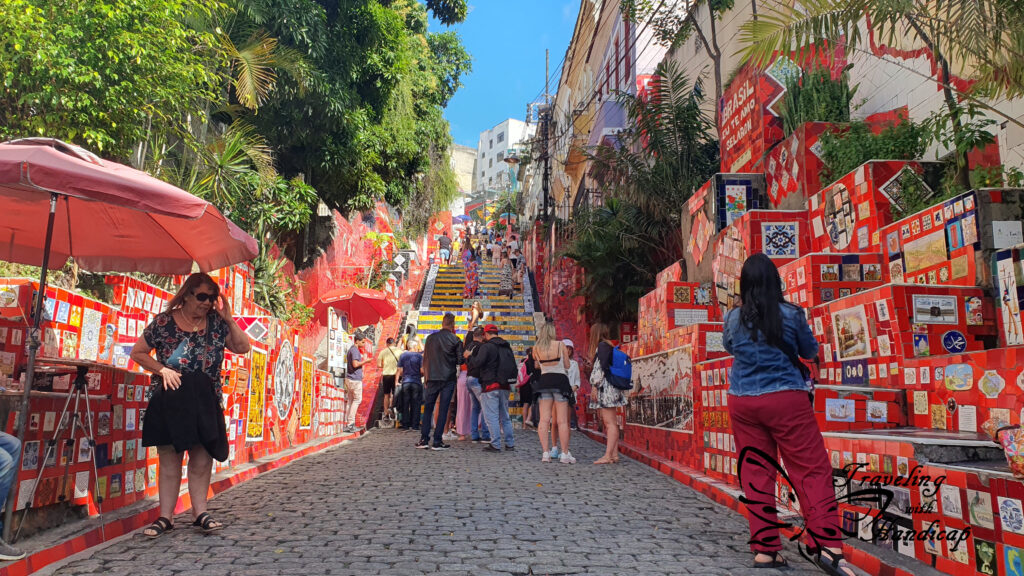
Municipal Theater and National Library
Both the theater and library can be visited. The buildings are great from the outside but even better from the inside. Especially for the theater, there are tours or shows available in order to visit it. The Praça Floriano is a large square with also other buildings like the Centro Cultural Justica Federal or the Cine Odeon – Centro Cultural Luiz Severiano Ribeiro.
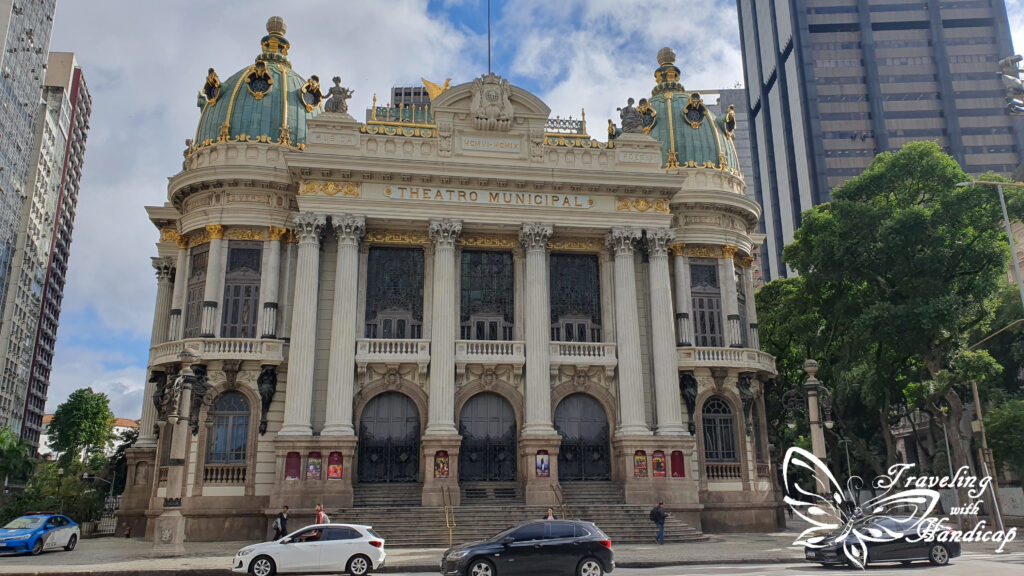



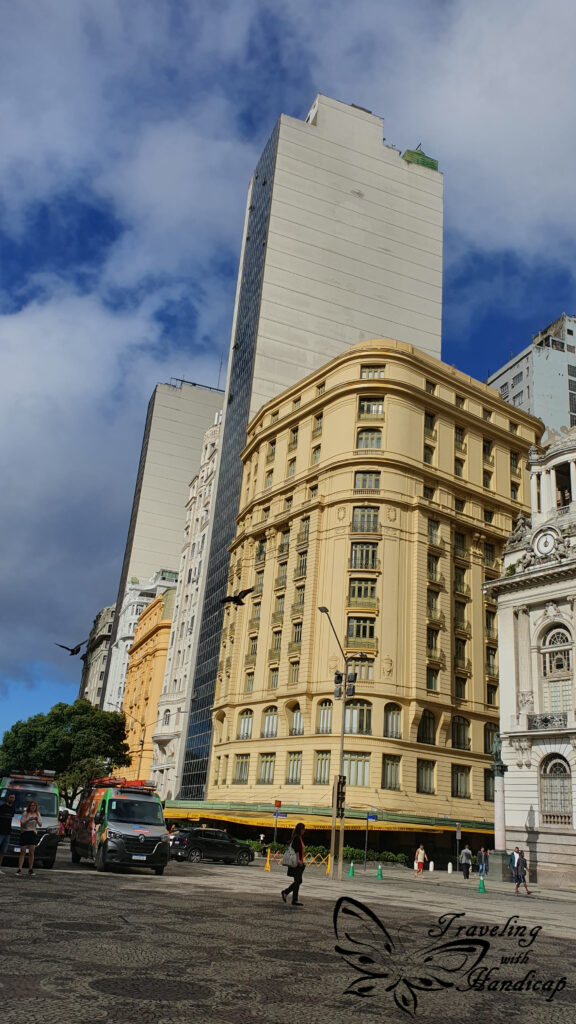
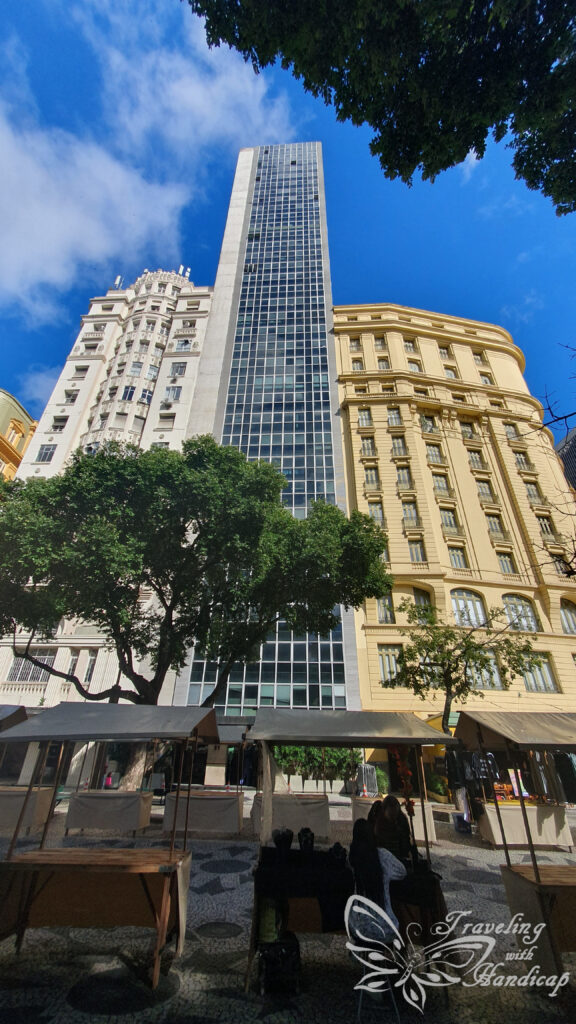
Praça XV de Novembro and Paço Imperial
The place of the XV November faces the harbor for the ferries. Every Saturday, there is a huge second hand market. The Chafariz do Meste Valentim marks the location where the water started in early years. However, Rio has been extended by drainage of certain areas covered by water.
The imperial palace is a culture and arts center in our days. Nevertheless, it has been the imperial palace during the time when the Portuguese crown family settled in Brazil in order to avoid being overrun and defeated by Napoleon. For some reason, the old crown family had to leave Brazil and go back to Portugal. Their son stayed and became the first king of Brazil, before Brazil became a republic.
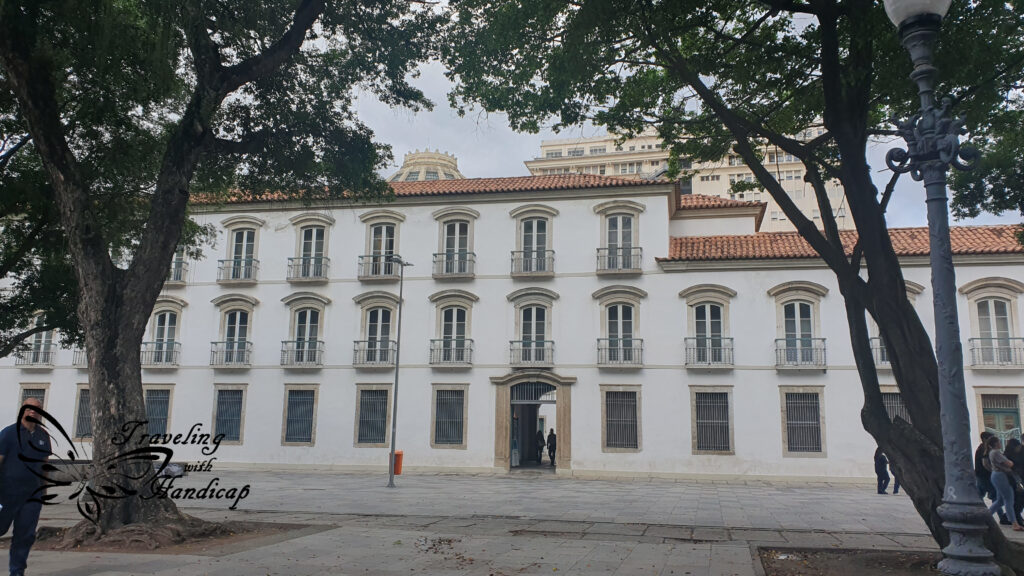

Confeitaria Colombo
The most famous café of whole Rio is the Confeitaria Colombo. A more than 100 year old café with many huge mirrors. They have many (and good) sweets, coffee, and also some savory things. I went to the café with a couple from Rio who I got to know in Buenos Aires. There is most likely a queue for entering, so come early enough with respect to its closing time.

Convento de Santo Antonio
This monastery is not very special from the outside, I wouldn’t want to stay there only for a night. There are still Jesuits living in the monastery, though. The Jesuits are very powerful and big in Brazil, since its colonization. This centuries-old monastery beats with the religious statues and art it holds and one church that smashes you down by its overwhelming color gold. It feels like literally gold-only. This is, honestly, why I don’t like the Jesuits – what have they done to get enough money to afford churches like this? It has nothing to do with abstinence and reduction.

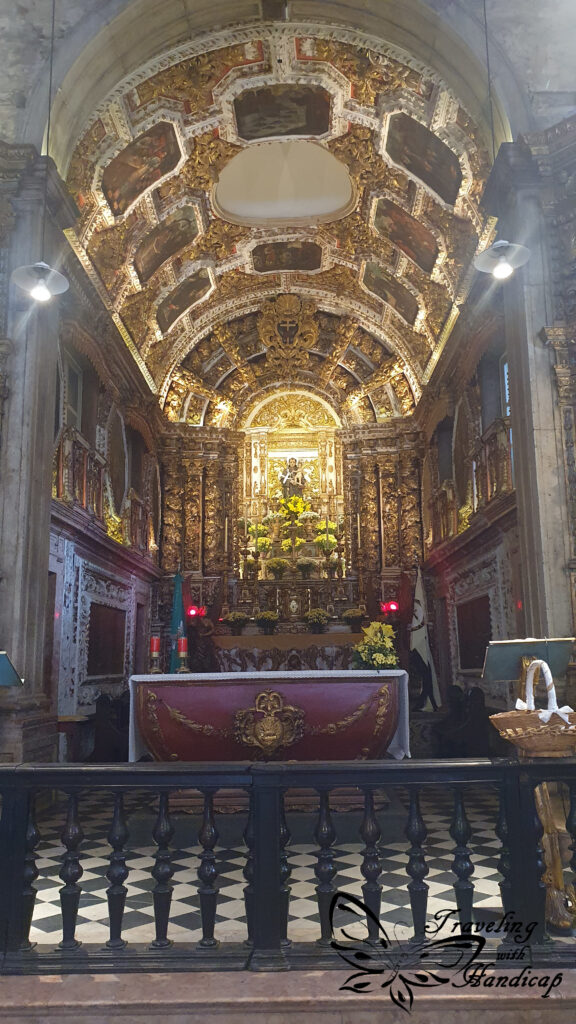



Catedral Metropolitana
The cathedral of Rio is weird, at least very unexpected. It does not look like any of the old churches known from Europe. It has rather been built in a brutalist style, representing the time after the wars when there was a “lack of not only material but everything”. If you pass by and don’t know that this specific building is the cathedral, you will most likely not recognize it.
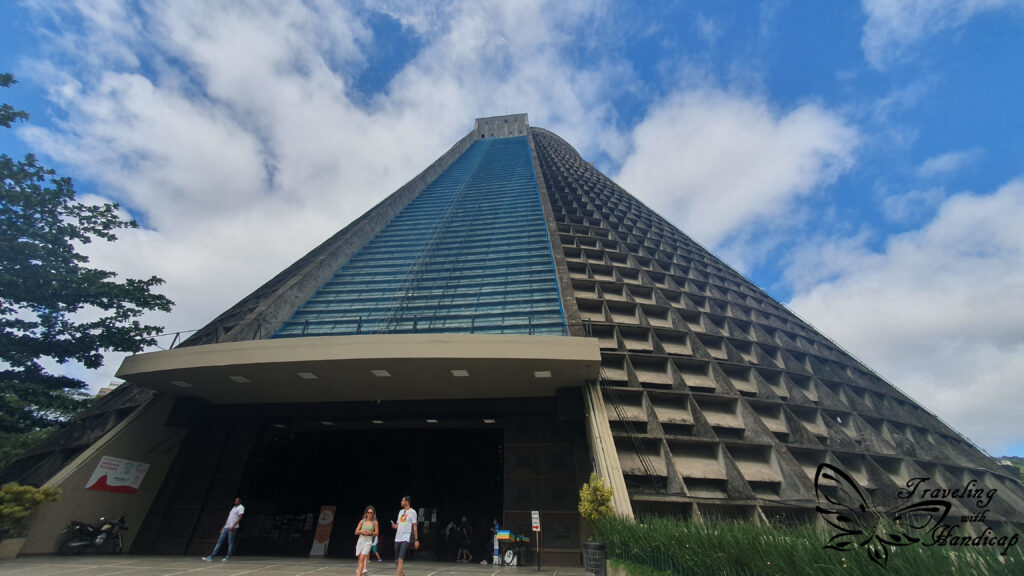
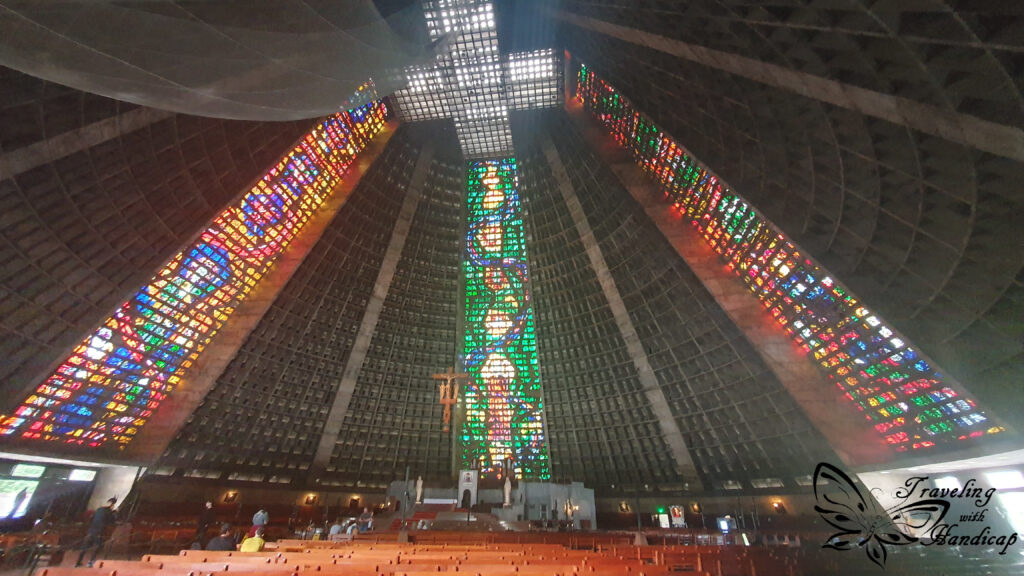

Arcos de Lapa / Aqueduto da Carioca
The Arcos de Lapa have been built as an aqueduct to transport water from the river Carioca to the people of Rio. It has been built within the colonial years of the mid 18th century. In our days, it is not used as an Aqueduct anymore, even though it is still possible if I remember correctly. In our days, the tram to the Santa Teresa neighborhood uses the Arcos as its “road”. Taking this tram is definitely a great thing to do.
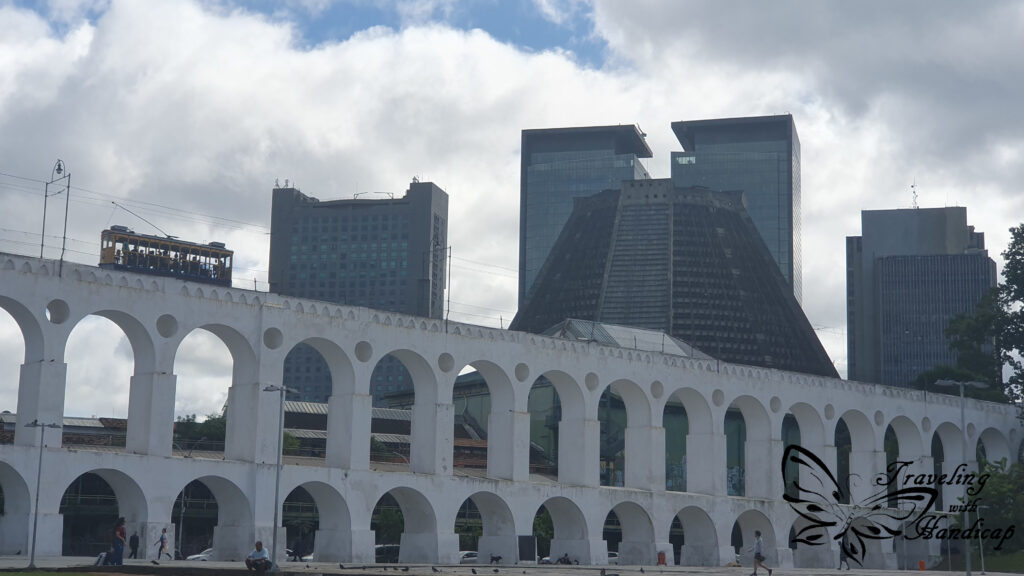
Santa Teresa
The tram consisting of one car will take you from next to the cathedral to the Santa Teresa neighborhood using the Arcos de Lapa on the way. I really liked the tram ride. The quarter Santa Teresa is nice, though, reasonably quiet during weekdays. On Saturdays, many people visit the cafés and restaurants of Santa Teresa. I recommend taking the tram all the way up and on the way down get off in the center of Santa Teresa, for a break and to explore. Higher up the mountain, you may watch different favelas stretching over neighboring mountains.
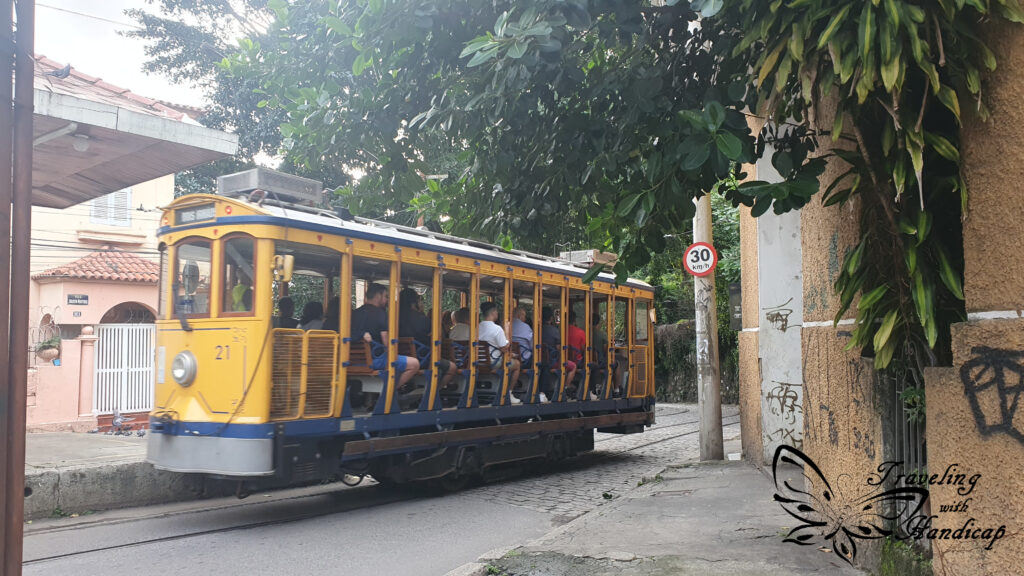

Getting off at Largo do Curvelo is a good spot. From this area, you may walk to the Parque das Ruinas and the Parque Chácara do Céu. From these two parks, you have an interesting and different view over Rio. Moreover, from the Parque Chácara do Céu, you see the Sugar Loaf quite well. When I went there, it started to rain with the result of a big rainbow over the Sugar Loaf.

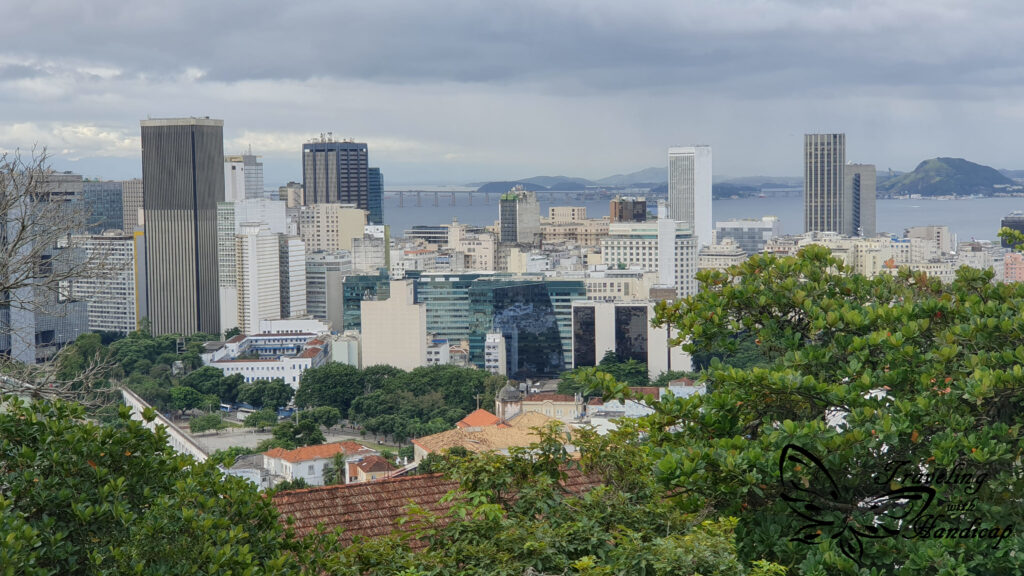
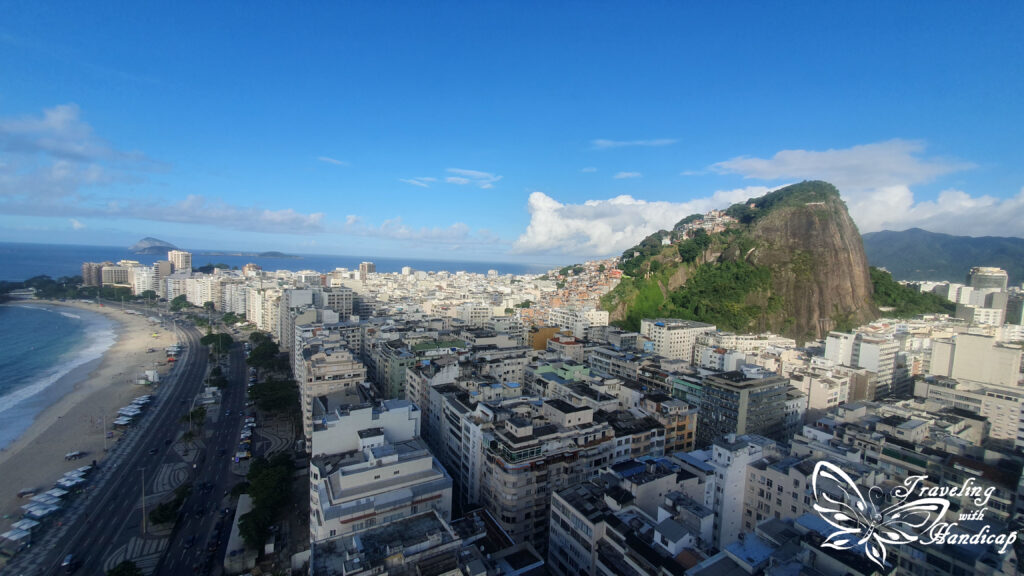
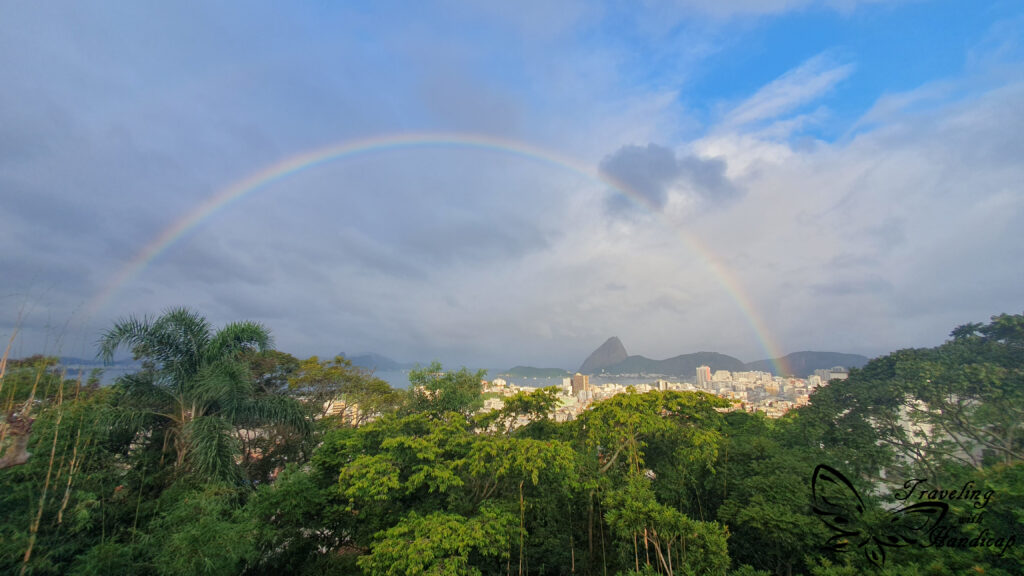
Copacabana and Ipanema
Copacabana and Ipanema are known as both the most secure and touristy neighborhoods of Rio. No matter where you stay in one of the two, the way to the beach is not too far. Nevertheless, I don’t recommend walking around at night (Uber!) since homeless people are living on every street anywhere in Rio. I preferred staying in Airbnb in Copacabana because the hotels were too expensive, and the hostels had too bad reviews from my perspective. Moreover, I didn’t want to stay in Ipanema because the houses looked a bit less maintained than in Copacabana. The better bars and restaurants are located in Ipanema though.
Beaches
For sure, Copacabana and Ipanema are known for their beaches. I highlight beaches because the water is not really usable to swim. The waves are quite rough, offering good conditions to surf but not to swim. On sunny days, people do all kinds of sports along the beach. Between beach and road there are many little cafés and bars offering food and drinks to the beach tourists. On Sundays, one half of the big road along Copacabana is blocked for cars, so people can use it to walk, run, or any other sports which is cool.
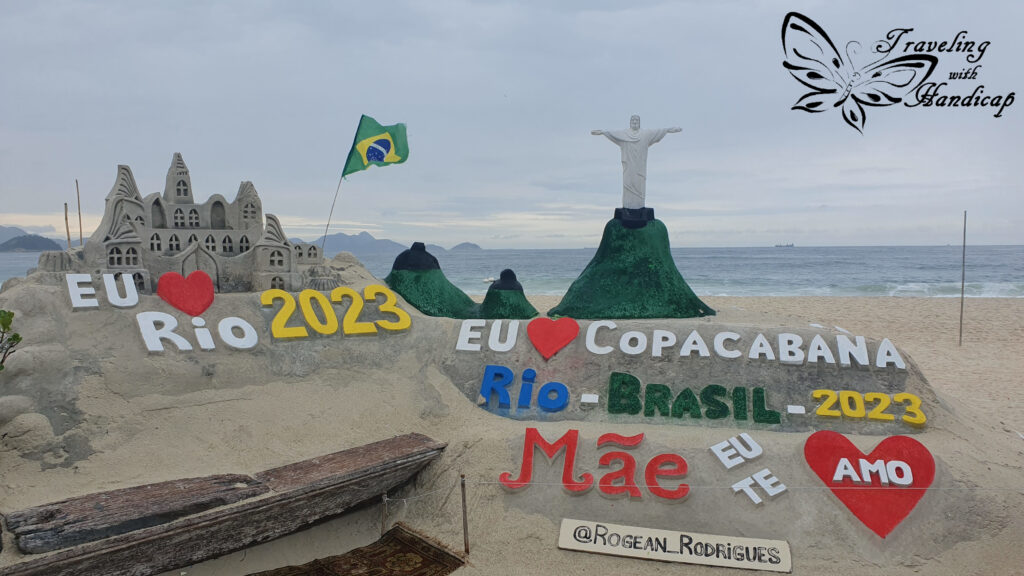

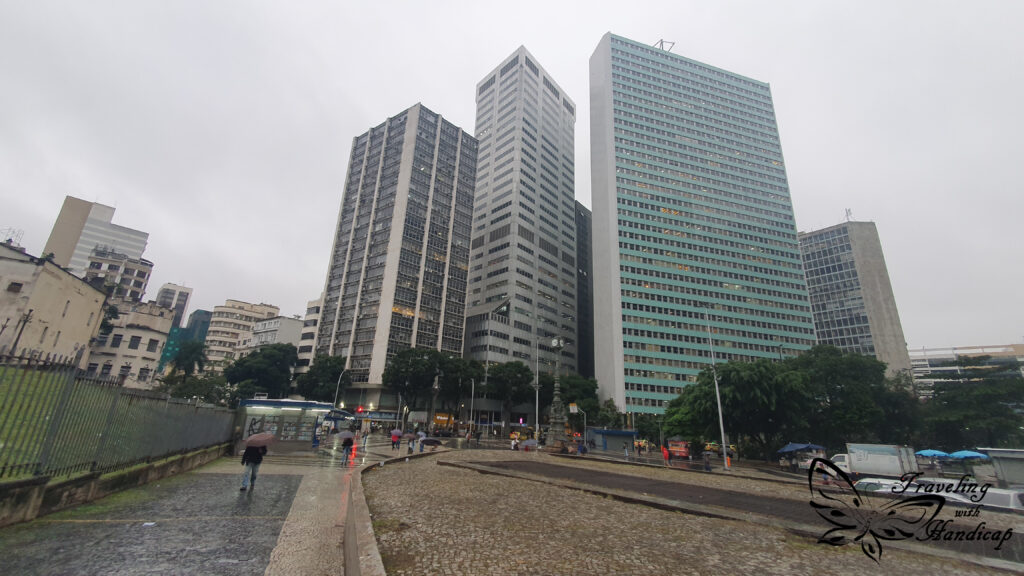
The Ipanema beach is known to have specific areas for specific groups of people. Each guardhouse has a specific number and is decorated by some colors representing the group of people. Like the surfers, the gays, …

On rainy days there is literally nothing going on along the beaches. On sunny days there are loads of people. It’s not all about “to see and to be seen”. Of course, a group of people walks along the beach or runs along the road wearing almost nothing. Other people seem to just enjoy being there or taking their dogs for a walk. For sure, not even 50% are the super-thin girls that are sometimes presented on media.

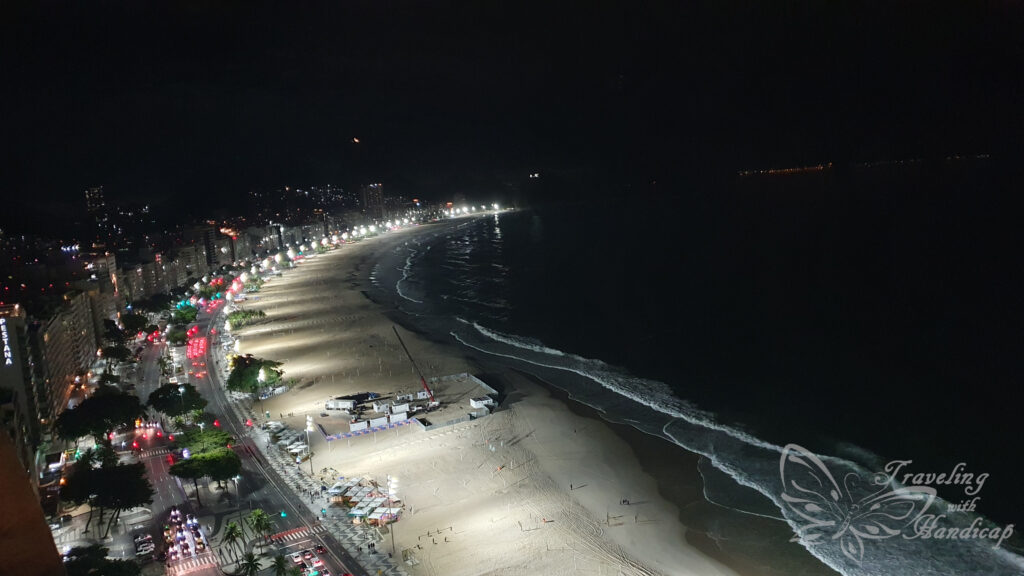
Museo Histórico do Exército e Forte de Copacabana
In my opinion, the museum should definitely be visited. But not so much for the museum. You have to pay the entrance fee to get to the museum and also to two cafeterias with great view and the final fortress consisting of stones. The view from these stones is also great, without entering any part of the museum.
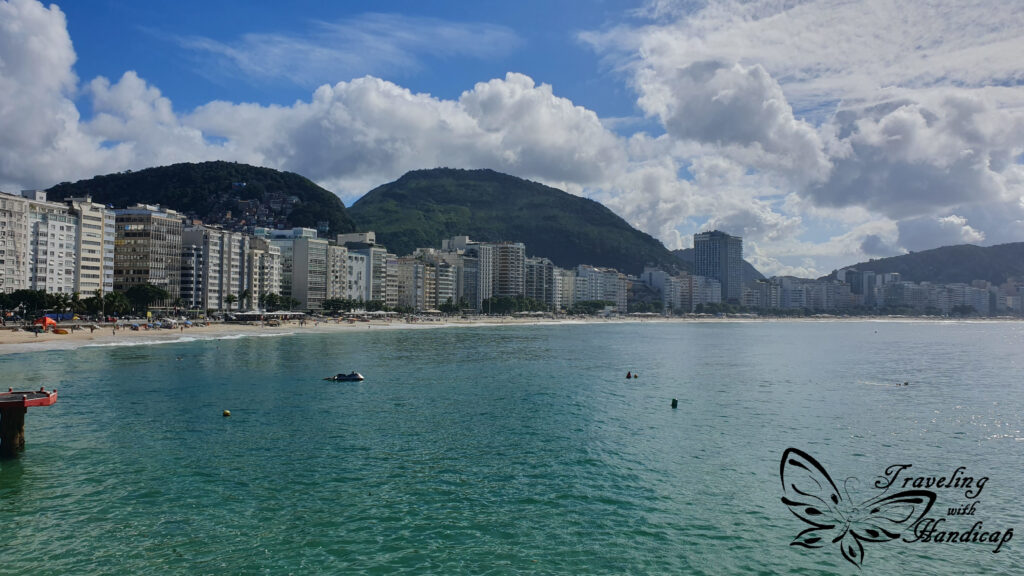

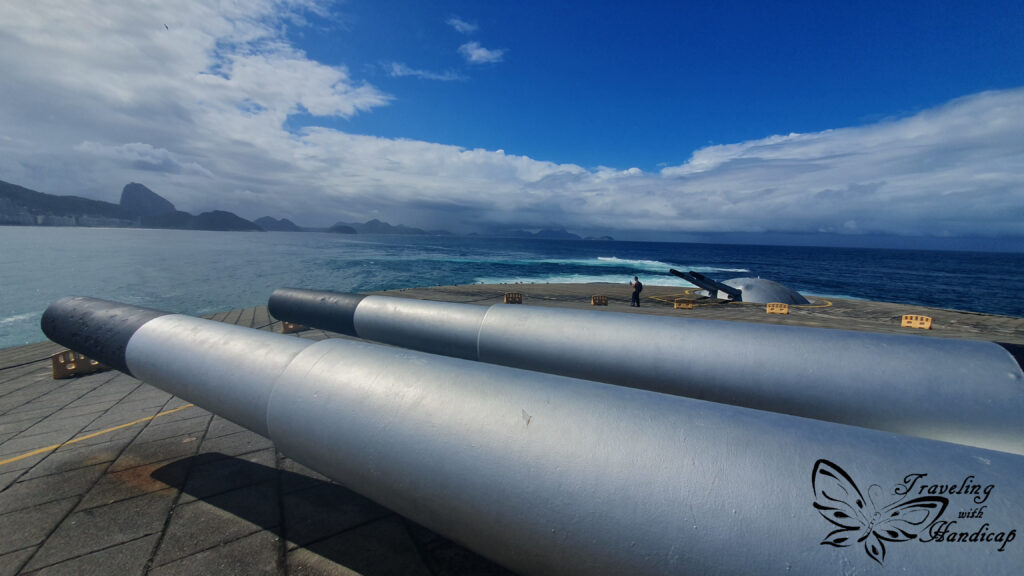
Actually, I liked these outdoor-parts most. Nevertheless, you may visit the museum. The exhibition within the house is rather boring whereas the fortress beneath the stones is quite interesting. It gets more sweaty though, the further you walk in.


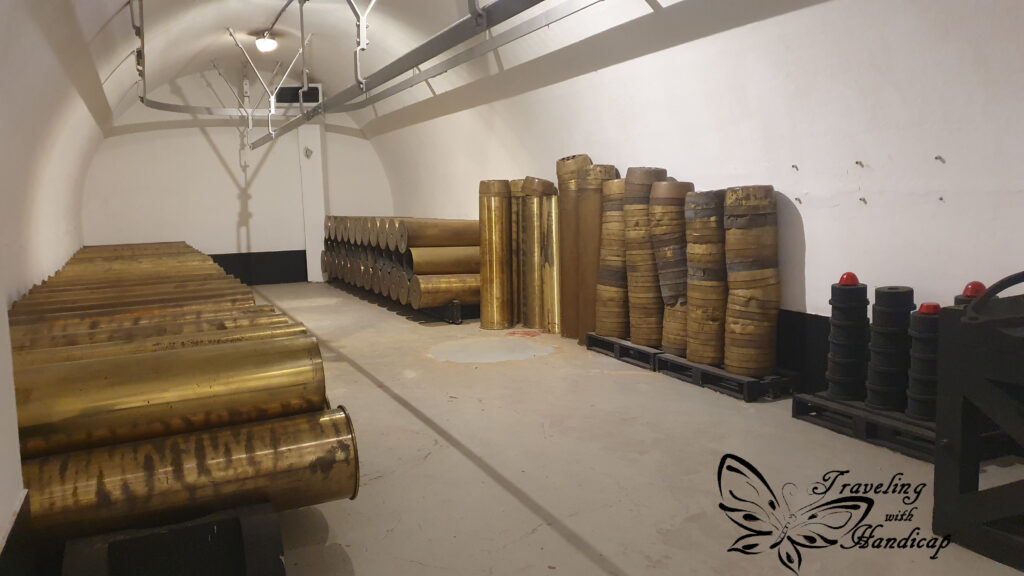
Pedra do Arpoador
This stone formation is located on the end of Ipanema beach connecting to Copacabana. It’s a great place during the day as the view is nice, but even better for sunset. Many people meet there just for sunset. You may set yourself up by buying drinks on the way. If you forget about it or need new stuff, there are people running up and down the stairs selling drinks and other stuff. The smell of the glue which is used for Marijuana is also quite present there (similar to anywhere else across Rio).
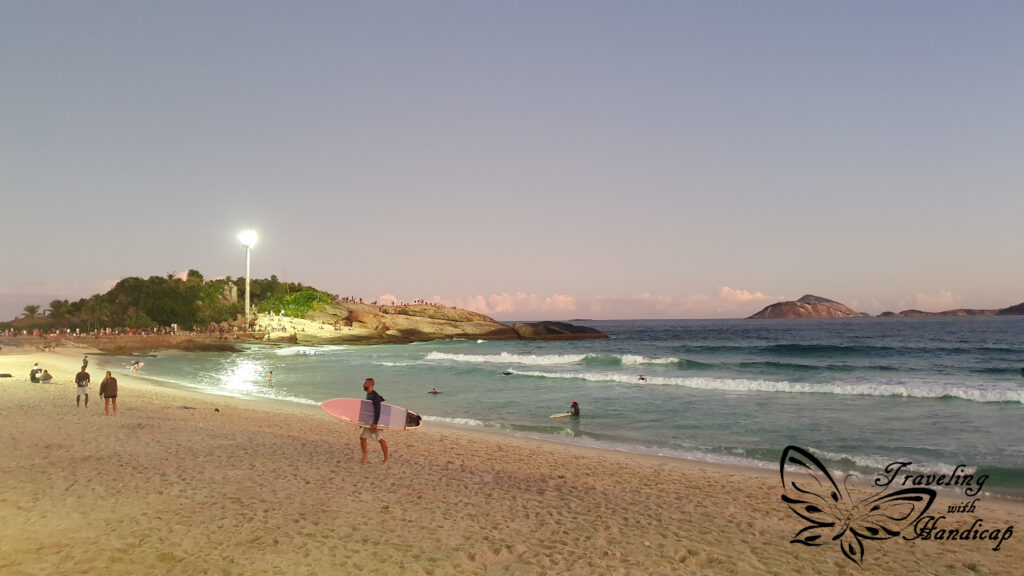

The Cristo Redentor and the Sugar Loaf
The Christ statue
The statue is 30 m high and standing on an 8 m high base. There is a little chapel within the base. The art-déco statue has been built 1922-1931. Even though 30 m is quite tall, it looks smaller when you’re standing just in front of it. I assume this is also because just the base is already 8 m high. Usually, many people accumulate within this very tiny viewing platform. So you always have to queue, no matter where you want to take a picture.
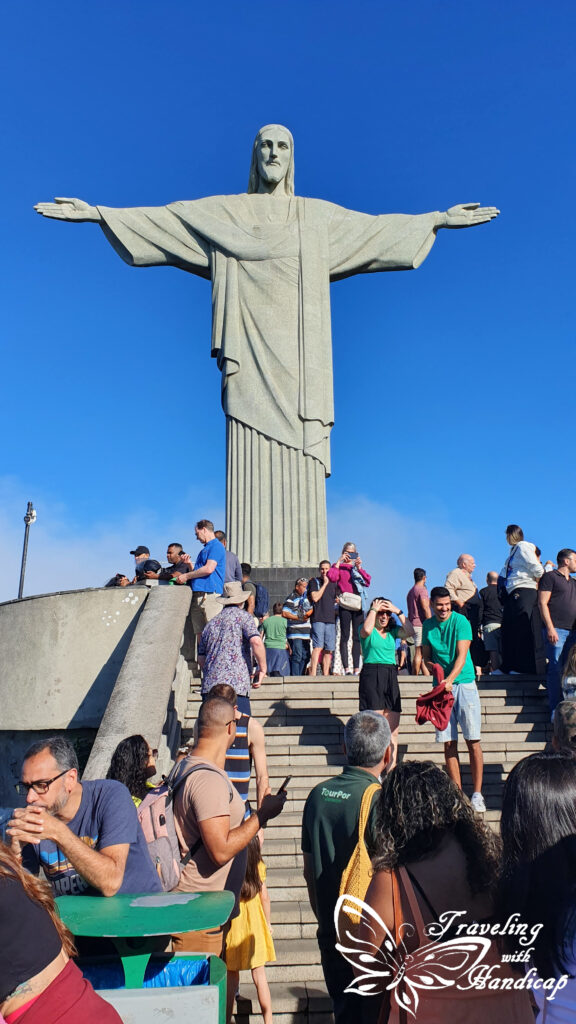


You don’t need a lot of time for the Cristo, you literally take the train, then you queue for some photos, you might drink a coffee and then take the train down. There’s nothing else to do, and the platform is quite tiny. I for myself was happy to leave the crowd of people.

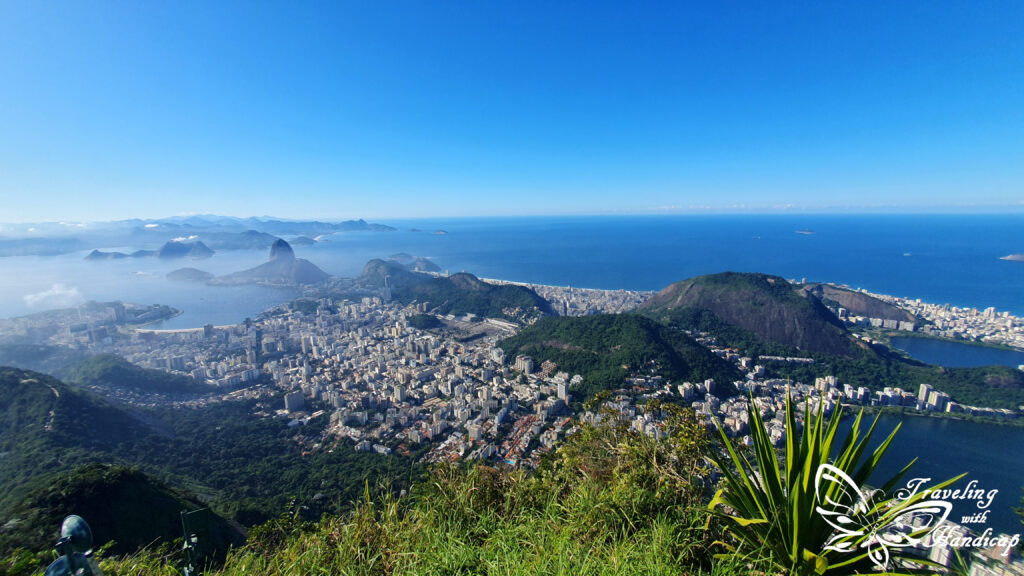


Important point to consider regarding the visiting time
The most important recommendation at first: don’t buy a ticket before you go. Tickets have dedicated times for the train (or the vans, but that’s a rather boring option in my opinion) but you have no clue about the weather. If it is cloudy, you won’t see anything. This is because the Christ statue is on the top of the 710 m high Corcovado mountain. Since all the remaining parts of Rio are further down towards sea level, also the other mountains, the Cristo is often above the clouds. And if there are clouds between or around the Cristo and Rio, you don’t get the view you come for.

In this case, I do not recommend coming early in the morning, to be “one of the first people”. This is why there are more clouds in the morning than during the day. I took the train (quite steep but a cool ride) at 9 and watched clouds disappearing from the top. I could see a lot, but it was still not completely clear yet. Sometimes it never clears up completely.
The Sugar Loaf
Visiting the Sugar Loaf needs a lot more time than visiting the Cristo. You start with the Teleférico do Pão de Acúcar to get onto the Morro do Urca. On top of this mountain you already find many great photo opportunities and a huge relaxing, shopping and food area. From the Morro do Urca, you need to take another Teleférico to finally get on top of the Pão de Acúcar. Actually, you may spend half a day or more among the two mountains, exploring and enjoying.

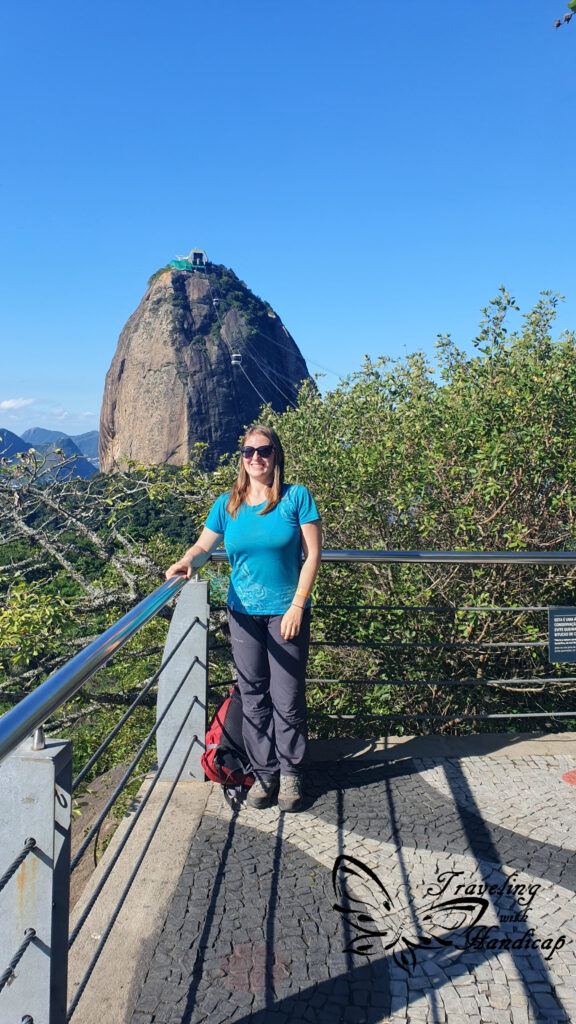
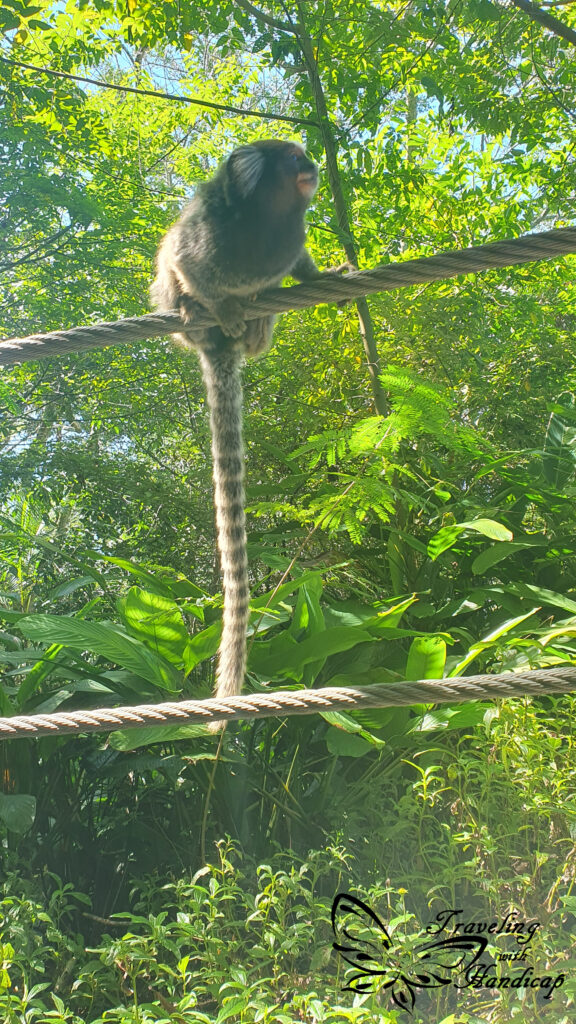
From the cable car entrance of the Sugar Loaf, you find a little walkway bringing you a tiny bit down the mountain, into green nature. I read that the Sugar Loaf and Morro do Urca have been quite dry and brown. Then people started planting and by now they managed to bring regional flora and fauna back. There are many of the little monkeys (which are considered to be rather invasive as they don’t have sufficient natural enemies within populated areas).
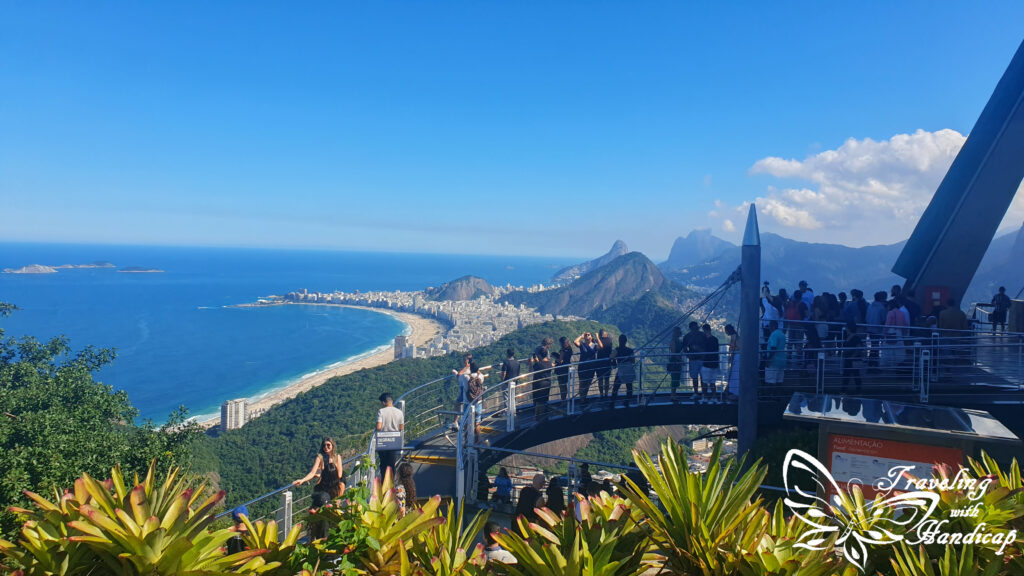

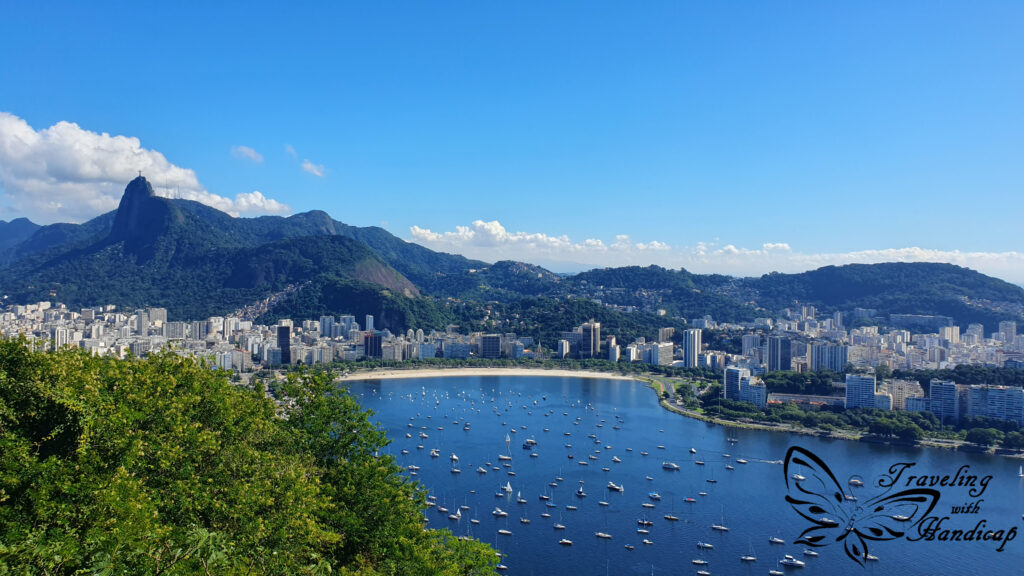


Beaches Vermelha and Urca
The Vermelha beach is right next to the cable car station and can be visited with the Sugar Loaf in one go. Also, the Urca beach is not too far, but most likely too far to walk. These beaches are located directly at Urca and Sugar Loaf and tiny but seem to be peaceful.
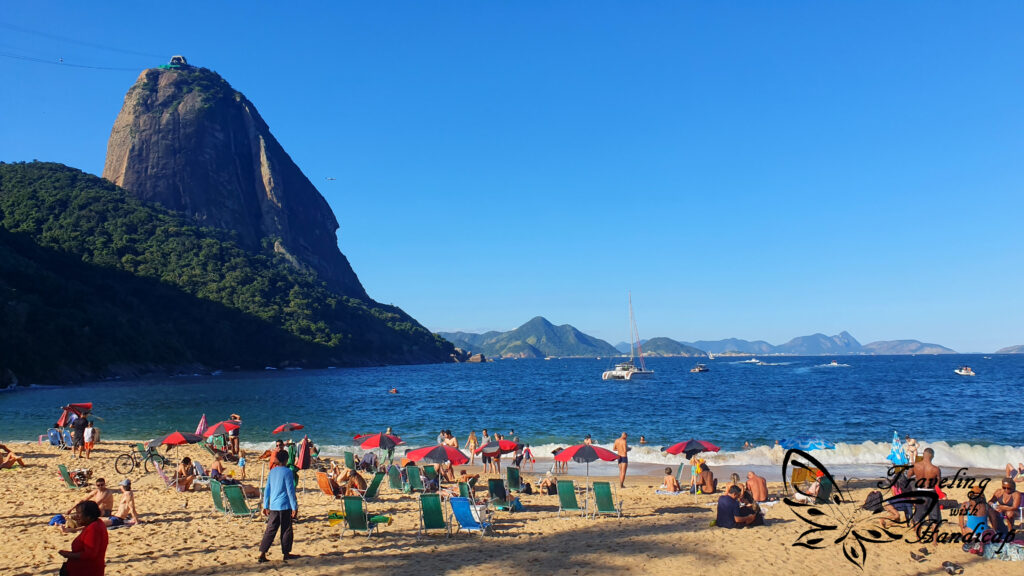
Further things to do
Football in Brazil: Maracanã
Football is important in Brazil, it’s like a religion. The main rival of Brazil is Argentina in terms of football. So since Germany beat Brazil within the 2014 world cup in Brazil, the people supported Germany in the final, as it was Germany against Argentina. There are many stadiums in different cities, in São Paulo, Rio, Salvador, Brasília, Minas Gerais and more. I managed to be in Rio over the weekend, where matches happened. Moreover, like this, I could attend a match in the stadium where we became world champion in 2014, the Maracanã.
It was quite cool, people keep singing all the times, without any breaks. Cheering and cheering. Moreover, people usually didn’t sit but stand, despite having seats. You don’t get any seat (by number and row) allocated, you just take one. As such, you shouldn’t be alone to have someone securing seats while you get food and drinks. People stand everywhere, also on the stairs. I had to smile because in Germany, security would run around chasing everybody to take the seat and not stand on stairs for a few seconds too much.

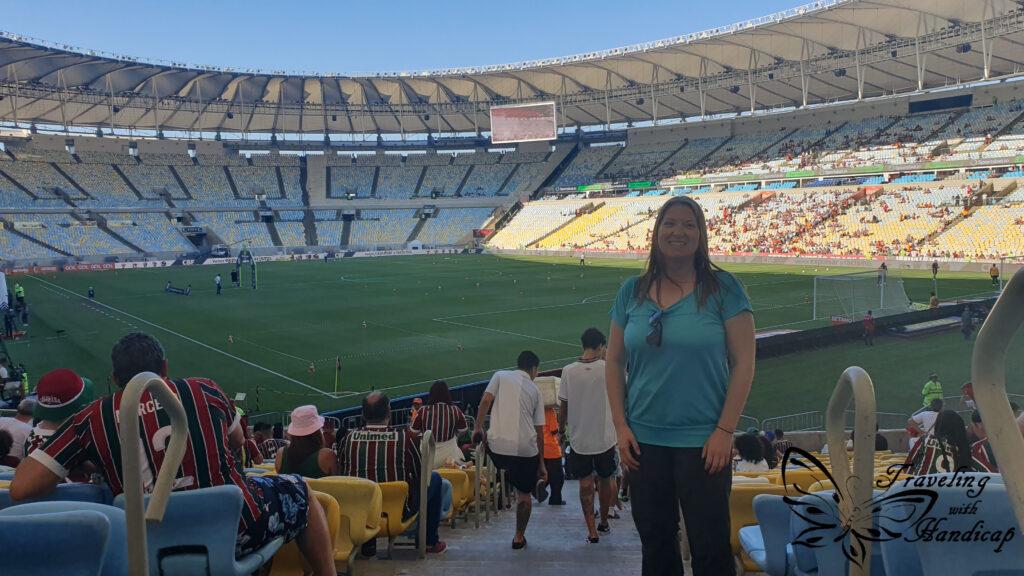
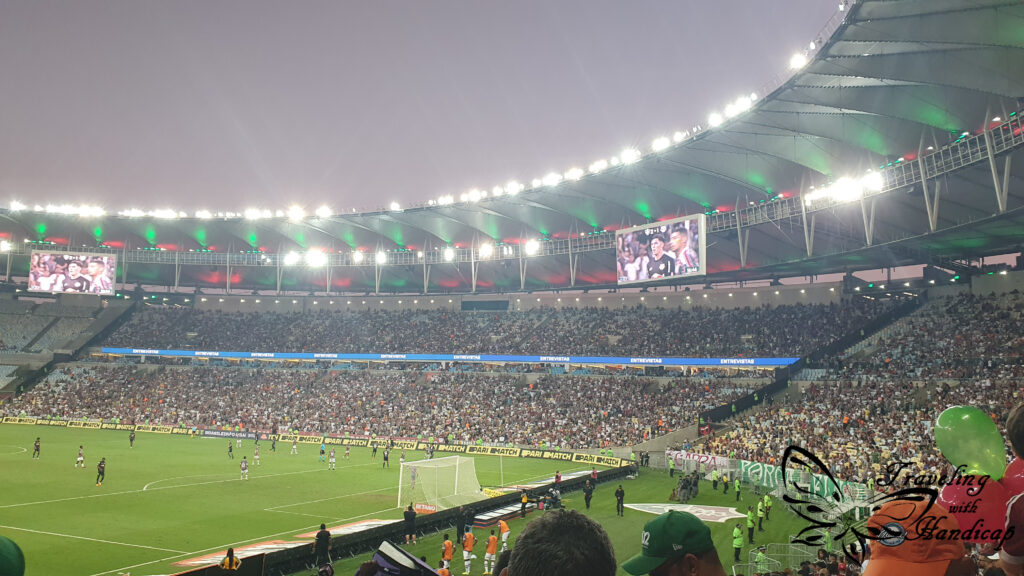
The ferry to Niterói
If you have the time to visit something beyond Rio, take the ferry to Niterói. This is the town facing Rio just from the other side of the river mouth. There is an intensely long street connecting Rio and Niterói (if you take the bus). However, the view from the ferry is much better, both on the bridge and on Rio or Niterói. If you manage to be on the ferry back to Rio just during sunset, you may see great colors in the background of Rio.


Actually, Niterói is not as big as Rio. It still has a nice old city center, shopping centers and many beaches. If you take a ferry in the early morning and come back at sunset, you might be able to visit all important parts of the city within a day. For me, the ferry ride was the reason for why I visited Niterói, not the other way round. Getting a ferry ticket is easy, you pay a little cash fee at the harbor for your ticket, scan your ticket and wait in the boarding area for the next ferry.
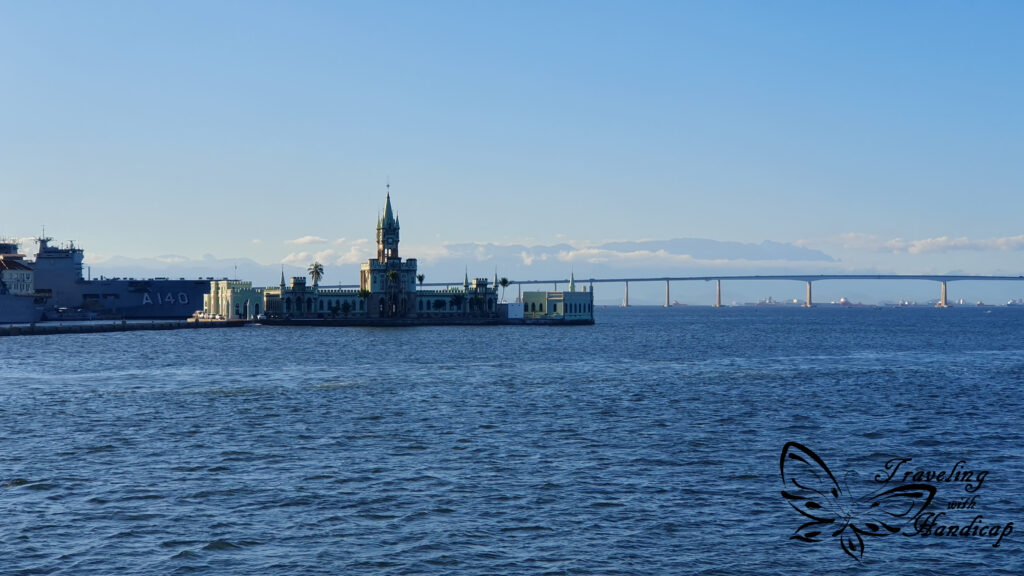


Visiting a Favela: Santa Marta
There are many favelas in and around Rio. Most of them are located on the mountains. Further away from the center, there are favelas in the flat. Well, honestly, the whole way in is on a freeway with favelas everywhere to the left and right until the old city starts. You shouldn’t enter a favela on your own, but it’s definitely a touristy to-do to take a tour into one of the favelas. I booked my tour with GetYourGuide, to visit the favela Santa Marta. To me, the price was fair, knowing that a local kindergarten is supported by parts of the money.
The Favela Santa Marta is on the mountain below the Mirante Dona Marta. Honestly, it is quite steep to get to the upper end of the favela. For the world cup and the Olympics, police had a higher presence in and around the favelas, presenting to the world that they are “in control”. However, afterward, they left and never went back in. As such, the time window for any infrastructural improvements was small. In Santa Marta, there is a little train which is happily used by inhabitants to transport their goods up to their houses. The water supply is rather unstable though, it has not been part of the improvement.

The visit
However, when I visited, the first train worked, the second didn’t. Therefore, we had to walk up so many stairs. There are no roads and I would have gotten totally lost without a guide. Left, right, up, curve, back, … anything. The houses look quite crappy from the outside, but some are really taken care of and quite nice from the inside. This favela has been built from top to bottom, so the further up you walk, the older the houses. Accordingly, the material of the walls becomes more “anything we have available”. Unfortunately, the favela cannot crow because the police or other officials have built a wall on the upper end.
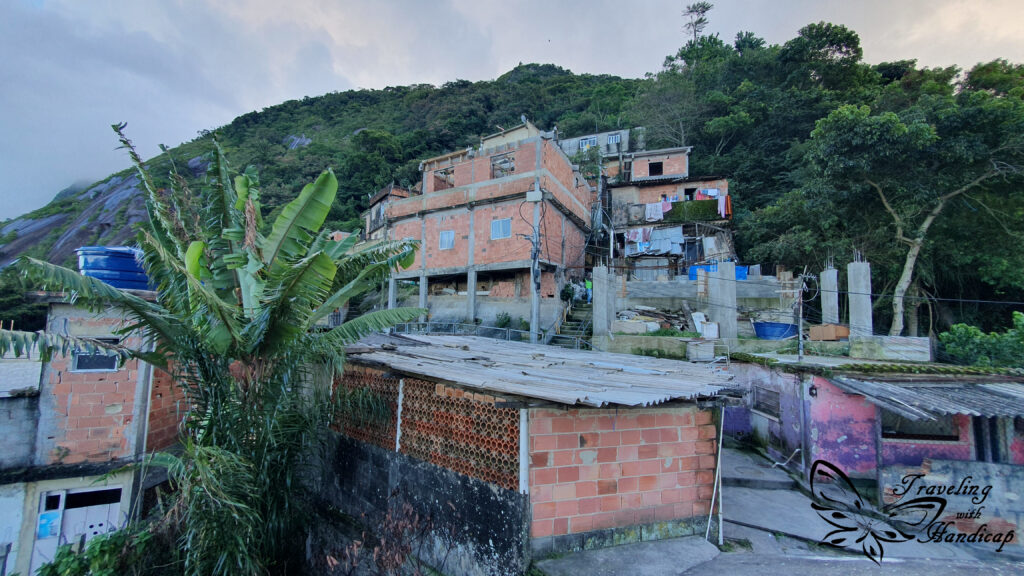

We visited the Capela Santa Marta which is located quite up in the favela. It is actually a coincidence that both the favela and the chapel are named after Santa Marta. The two Martas are actually different persons. From the roof of the chapel one has a great view! Afterward, we made our way down again. I wouldn’t have found the way. We went to the famous Michael Jackson Square. This is where parts of the “they don’t care about us” video have been filmed.

The people
My guide knew everyone we met. And people knew him. He introduced me (I was the only tourist on that day, so I had a private tour) and everyone was very friendly. They tried to communicate with me, showed me drawings, or a little girl even hugged me. The people in the favela are not necessarily rude or uneducated. Some boys played football at a soccer field quite far up/in the favela. Football is a very serious thing in favelas.
I have been told that the rules of the favela are the reason people trust each other. Robberies etc. are far less likely in a favela than outside since you would be blamed openly within the favela if you try to do “something”. Honestly, I felt a lot safer when walking through the favela than out of the favela in the streets of Rio.
Nevertheless, the absence of police is also the reason for why the drug-related or criminal hubs are often located within favelas. These people might not hurt anyone within the favela. Moreover, they might rather organize everything that is going on beyond the favela.
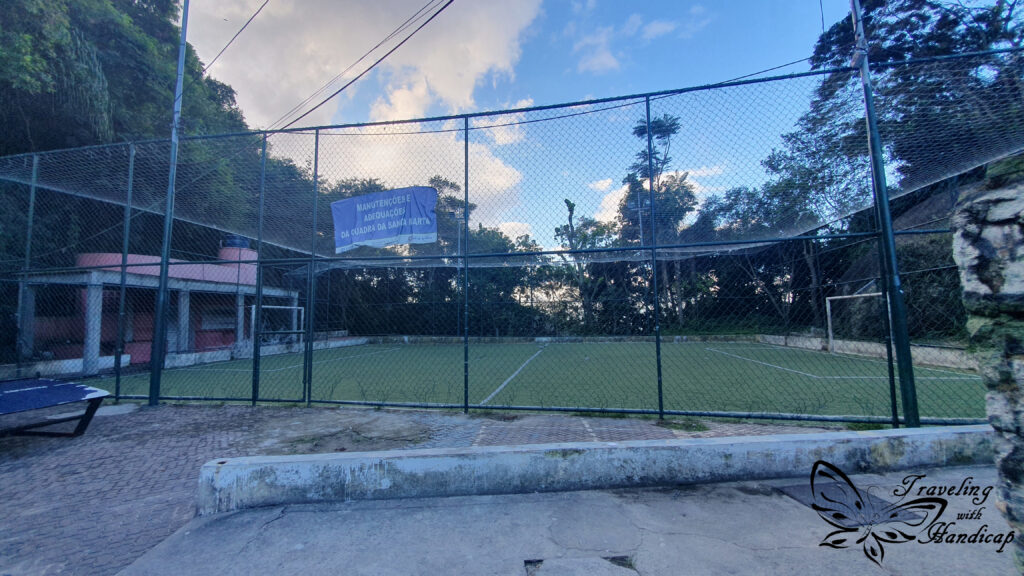
Lago Rodringo de Freitas
This lake is located between the Ipanema beach and the mountain with the Cristo. There have been favelas around this neighborhood, but they have been “fire-cleaned” at one point. As soon as these favelas have been removed, many rather fancy buildings have been built. This is why around the lake there is a rather rich neighborhood. In the mornings, you will see many people running around the lake or taking dogs for a walk. During the night, you have a view on the colored Cristo statue. Nevertheless, there is not much going on at the lake during the night. However, the restaurants, bars, and pubs in Ipanema (there are excellent ones) are packed instead.


Mirante Dona Marta
The viewpoint Dona Marta is close to the Cristo statue but a different street. From there, you have a great view over Rio. Actually, this viewpoint is great for sunrise and sunset. Nevertheless, it is most famous among locals for sunrise. I didn’t go there because I didn’t intend to go there in the morning, in the dark, alone. Within a group, I would have checked it out. It is best to take an Uber to get there.
Airport and Bus connections
Rio has a (new) bus terminal as well as two airports. Coming from e.g., São Paulo, one may arrive by bus and then take an Uber to the accommodation. The international airport is located further away from the city center, more inland. This is also the one with the majority of connections.
Some flights also operate on the domestic airport very close to the historic city center. The fun part regarding the smaller domestic airport is that you can literally watch the planes departing and landing from many places. In my opinion, the most spectacular landings are the ones passing the Cristo Redentor and flying a curve to just not hit the Sugar Loaf and go down right next to the Sugar Loaf.
Typical Food
In general, rice and beans are very common in Brazil. Depending on the region you are in, there are other more or less common dishes. Beans were not so much my favorite. I only rarely eat red beans in Germany, so having them as a side with so many meals was quite new. Another well-used ingredient is cassava (→ Wikipedia), a root which is quite dry. It is used for Tapioca or even fries. I assume there are many more dishes with cassava which I don’t know.
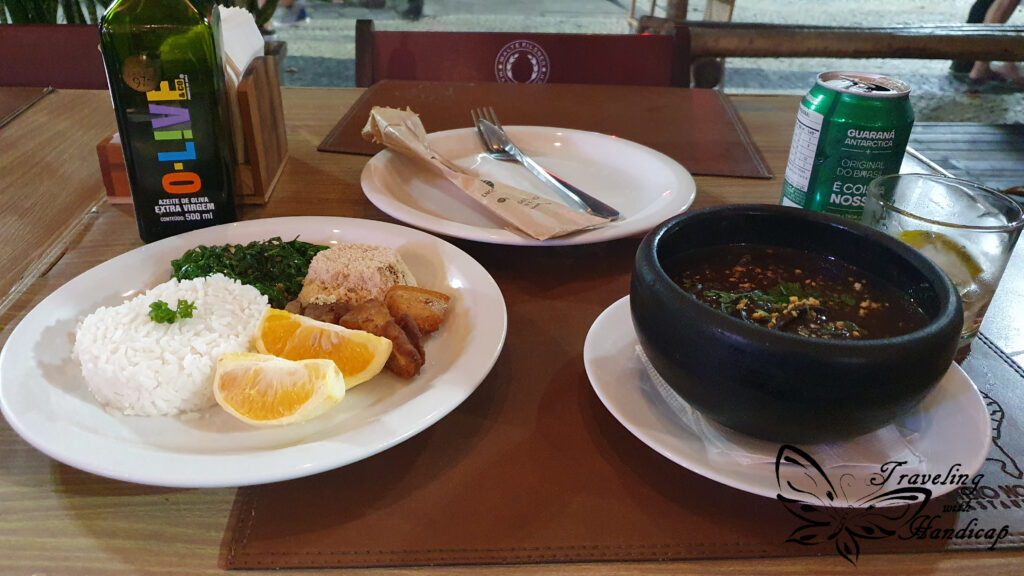

Along the coast, especially in northern Brazil, fish and seafood is very famous. However, more inland, people eat a lot of meat. One reason for why the Amazon forest is destroyed is to grow soy as a cheap food for cattle to provide cheap meat for people. Further up north, for example in Salvador de Bahia, the kitchen has different influences and consists of even more beans and seafood. However, the kitchen in Brasília is rather multinational.
Açaí is a very famous fruit from the Amazon which is available all across Brazil. Actually, I really like to have açai sorbet with granola and fruit.
